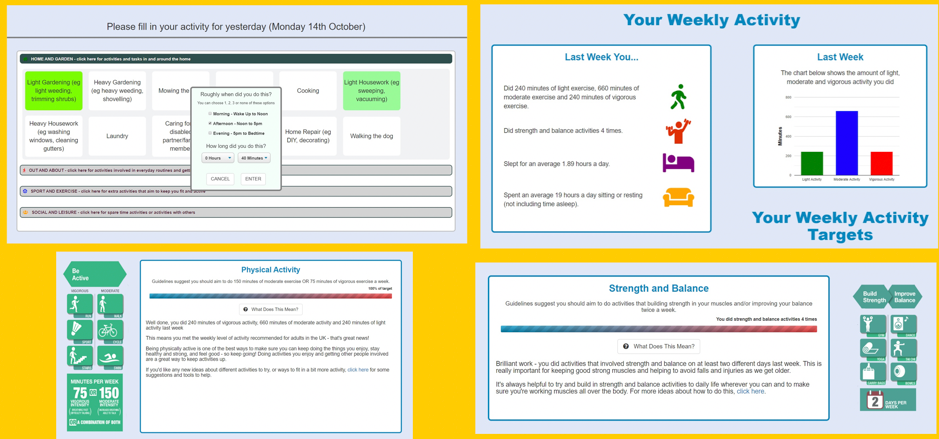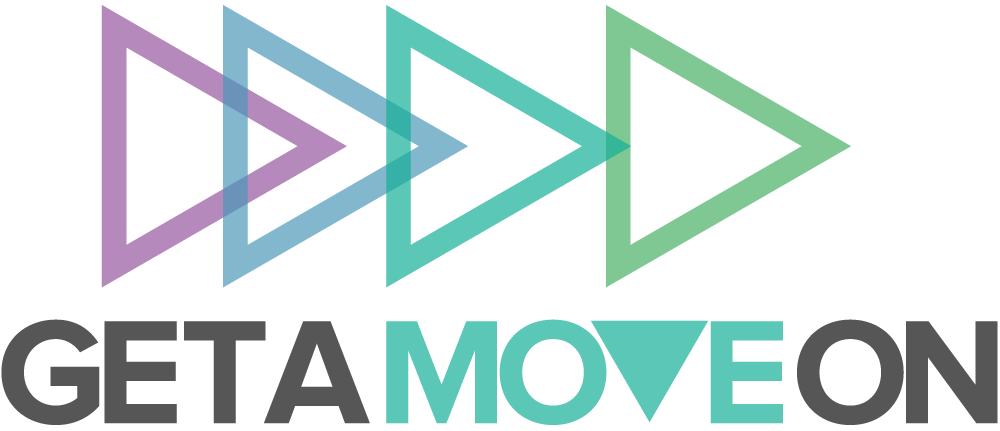Lessons from the DAPPA project
A new tool for Digital Assessment of Precise Physical Activity for older adults, to overcome the limitations of wearables and self-report measures so we can accurately capture all the #PhysicalActivity an older adult might do

Background and context
Keeping active as we get older is vitally important for health and wellbeing but older adults are the least active part of the population. It’s important to help older adults to understand their physical activity in terms of what they are already doing, and what they can do to improve this, in a way that is achievable and appealing for them. Tools to measure and provide feedback about older adults’ physical activity are important to achieve this. Whilst objective measures like wearable activity trackers are the ‘gold-standard’, they are expensive and struggle to detect certain types of beneficial activity (e.g. strength and balance training). On the other hand, questionnaires tend to be less expensive but existing examples are problematic for a number of reasons: 1) they often do not measure all important aspects of physical activity (such as light intensity activities); and 2) their accuracy is affected by how accurately people remember and report the activity they did. With the rise of older adults’ engagement in digital technologies, this offers a platform on which to develop a measurement and feedback tool with features that can potentially reduce the limitations of paper-based self-report measures, whilst not incurring the expense of objective measurement.
What we did
Our aim was to develop and evaluate a new digital measure of physical activity that would accurately capture all the activity that an older adult might do. This tool, we hoped, would not only allow us to capture self-reported physical activity in a non-invasive yet precise way, but also enable us to provide tailored feedback to support older adults to make positive behavioural changes.
We were particularly keen to adopt a person-based approach to the development of this new digital tool in order to ensure that it was easy to use, well liked and understood, and impactful for the target older adult users. The person-based approach puts the user needs at the heart of the development process and directs the formation of key guiding principles to inform how the design and function of the new tool can help solve any challenges to its effective use.
The first phase of our work involved collecting data from several sources that informed the development of our guiding principles and in turn, the tool itself. Specifically, we explored qualitative literature, surveyed experts in the field of physical activity and ageing and interviewed older adults themselves. This provided us with rich insight into the nature of physical activity behaviour as we age, the first-hand experience of completing self-report assessments and the use of technology by older adults.
The second phase involved trialling the developed tool with older adults, firstly in a real time think aloud study and later in a real-world weekly test where the new assessment was pitted against a wearable and other paper based self-report measures.
What we found
We found that physical activity is thought of in very broad terms by older adults – not just within the traditional definitions of ‘exercise’ but as ‘movement’ and is frequently embedded in daily life activities – a finding that was echoed in the literature we reviewed. Older adults also expressed doubts about the utility of traditional terminology such as ‘moderate’ and ‘vigorous’ for helping to understand and report their own activity. Similarly, the expert survey and review of literature highlighted the difficulty with interpreting the terminology used and lack of precision and sensitivity for detecting behaviour change at low intensity as problematic for existing measures. In relation to technological applications to physical activity older adults expressed interest and experience in this, but stressed that it needed to be simple.
Taken together, this knowledge informed our ‘Guiding Principles’ that would go on to inform the creation of the tool itself. One key guiding principle was the objective to provide clarity/avoid misinterpretation about how activity is described and reported. To achieve this we planned for the tool to describe activities in terms of their type/nature instead of their intensity. We also aligned these ‘types’ of activity in accordance with how older adults tended to describe and experience their physical activity behaviour e.g. ‘At home/ in the garden’, ‘Social and Leisure’.
From the think aloud interviews with target users there was a general sense that the look and feel of the new tool was user-friendly and clear. There was however feedback that helped us improve the relevance of activities included in the tool and informed minor amendments to improve the functionality (e.g. to allow for activities to span different time points in the day). In the final phase of user testing we gained helpful insight based on the user experience. Although we hoped that the diary format would aid recall it appeared this still posed an issue for users when tasking them with thinking back over 7-days. Users also expressed that a period of familiarisation with the full tool would help them not to miss important activity options (or double count them), particularly non-exercise activities.
When evaluating the feedback element of the tool users liked that it brought their attention to strength building activities and found the tailored messages reassuring, as activities that the user hadn’t considered to be exercise counted as such. On the flipside, for some this also meant that they saw no need to increase their activity levels, or as one user put it: this could ‘make you complacent’.
Future Steps
The initial signs are promising. Users of the aptly named Digital Assessment of Precise Physical Activity (DAPPA) tool were positive about its format and function and have provide us with extremely useful feedback to help refine it and improve its usability. A key adaptation, and one which the digital format readily permits, is the move from seven day recall to a rolling one-day version. This, users said, would be a welcome change that would not be burdensome as it would place less demand on the memory.
Following refinements to the design and technical performance, the validity and reliability of the DAPPA tool as an assessment device will be examined against other, more commonly used objective and self-report measures. This will tell us if such a tool is valuable and credible for use in large studies of older adults physical activity. The feedback element of the tool, for use as its own light touch intervention will also be investigated as a way of supporting older adults change their physical activity behaviour.
This project was led by Dr Max Western (University of Bath). Project team: Dr Rosie Essery, Dr Katherine Bradbury (University of Southampton); Professor Nanette Mutrie (University of Edinburgh) and funded by the GetAMoveOn Network+
Max Western is a GetAMoveOn Fellow. Find out more about Max Western's work







